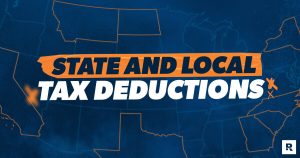Many teachers in the U.S. retire with pensions that provide a stable source of income during their golden years, but that doesn’t mean they can ignore retirement planning. In fact, teachers face unique retirement challenges, including the absence of Social Security benefits in some states. Education retirement planning requires a tailored strategy to optimize a teacher’s pension, savings and other retirement benefits. Whether you’re a teacher or work in a different field, a financial advisor can help you plan for retirement.
Teacher Retirement Plans
Teachers, like professionals in any field, must consider their retirement options carefully to ensure financial stability in their later years. They typically have access to either a defined benefit plan, known as a pension, or a defined contribution plan – and sometimes both.
Pensions
Pensions, known as defined benefit plans, provide a stable and predictable retirement income for teachers, calculated using a specific formula. This formula often includes factors such as the number of years a teacher has worked and their average salary, typically over the last few years of their career.
For example, a common pension formula might be 2% of the average salary of the last three years multiplied by the total number of years worked.
Defined Contribution Plans
Defined contribution plans offer a different approach, focusing on flexibility and personal responsibility in retirement planning. Plans such as the 403(b) and 457(b) are tailored specifically for public sector employees, including teachers. These plans share similarities with the private sector’s 401(k) plans but are designed to meet the unique needs of public employees.
Key differences include eligibility criteria, contribution limits, and sometimes, the matching contributions from employers. For example, 403(b) plans are available to employees of tax-exempt or non-profit organizations, and they may allow teachers with at least 15 years of service to contribute more than the standard limit.
403(b) and 457(b) plans also offer a variety of investment options, such as mutual funds and annuities, and contributions are typically made pre-tax, reducing the taxable income of contributors in the year the contributions are made. Some plans also offer unique benefits like the option for after-tax Roth contributions, which grow tax-free, providing additional flexibility in retirement planning.
Retirement Planning Strategies for Teachers

Retirement planning for educators requires a nuanced approach due to the unique characteristics of their employment and benefits structure. Retirement benefits for teachers can vary dramatically across different states, influencing the strategies they might adopt.
Contribute to a 403(b) or 457(b)
Contributing to a 403(b) or 457(b) should be all but a necessity for teachers who aren’t covered by pensions. But even educators who have pensions should also consider diverting a portion of each paycheck to a defined contribution plan, if they have access to one.
These plans offer tax-deferred growth, which not only helps in reducing taxable income during active working years but also means your investment gains won’t be dragged down by taxes each year. Just keep in mind that you’ll owe income taxes on the money when you withdraw it.
For 2024, the IRS has set contribution limits to $23,000 for those under age 50, with an additional catch-up contribution of $7,500 for individuals ages 50 or older (adding up to a total of $30,500).
Open a Roth IRA
Regardless of whether they have a pension or a defined contribution plan, teachers can also consider opening a Roth IRA. Since Roth IRAs are funded with after-tax dollars, these accounts offer tax-free growth and tax-free withdrawals in retirement, providing a valuable supplement to other retirement funds.
For 2024, the contribution limit for a Roth IRA is $7,000, with an additional $1,000 catch-up contribution for those 50 and older.
The versatility of Roth IRAs makes them a complement to existing pension or defined contribution plans, allowing teachers more control over their retirement savings and providing opportunities to balance taxable and tax-free income streams in retirement. Plus, there’s an added bonus to Roth accounts: they aren’t subject to required minimum distributions (RMDs), which add to your taxable income in retirement and can potentially push you into a higher tax bracket.
Strategically Plan for Social Security – If You’re Eligible
Eligibility for Social Security benefits among teachers varies significantly by state. In some states (opt-in states), teachers are covered by Social Security, while in others, they are not (opt-out states). Additionally, some states allow individual school districts to decide whether their teachers will participate in Social Security. Teachers in states or districts that opt out of Social Security will not pay into the system nor receive its benefits, which affects their retirement planning.
The decision to opt-in or opt-out of Social Security can impact a teacher’s retirement strategy and benefits. For example, teachers in Texas who do not participate in Social Security might need to rely more heavily on personal savings and state-provided retirement plans.
| Opt-In States | Opt-Out States | Hybrid States |
|---|---|---|
| New Hampshire, Vermont, Pennsylvania, New York, New Jersey, Rhode Island, Maryland, Delaware, Virginia, West Virginia, North Carolina, Tennessee, South Carolina, Florida, Alabama, Mississippi, Indiana, Arkansas, Michigan, Wisconsin, Iowa, Minnesota, Kansas, Nebraska, South Dakota, North Dakota, Montana, Wyoming, Idaho, Washington, Oregon, Arizona, Hawaii, New Mexico. | Alaska, California, Colorado, Connecticut, Illinois, Kentucky, Louisiana, Missouri, Nevada, Ohio, Massachusetts, Maine, Washington D.C. | Georgia, Oklahoma, Texas, Utah |
In states where teachers are eligible for Social Security, planning becomes a matter of understanding how these benefits can integrate with other retirement income sources, such as pensions. The potential offset of benefits due to receiving a pension, known as the windfall elimination provision, must be considered to accurately plan for retirement income.
Beware of Pension Offsets

Understanding the intricacies of pension offsets is crucial for those receiving government pensions, particularly when these are not covered by Social Security. The Government Pension Offset (GPO) is a policy mechanism introduced under the Social Security Amendments of 1977. Its primary purpose is to adjust Social Security spousal or survivor benefits for individuals who receive a government pension but did not contribute to the Social Security system during their government employment.
This adjustment is intended to equalize benefit distribution, ensuring that individuals who did not pay Social Security taxes do not receive more in benefits than those who did.
Let’s take as an example a retired teacher who gets $600 monthly from a government pension. Under the GPO, two-thirds of this pension amount, which totals $400, would be deducted from any spousal or survivor benefits through Social Security. If the spousal benefit was initially set at $500 per month, the application of the GPO would reduce this to merely $100 per month.
Bottom Line
Education retirement planning will require you to understand different plans available to teachers, including pensions, 403(b), 457(b) and IRAs. While pensions offer stability and predictability, defined contribution plans like 403(b) and 457(b) provide flexibility and the potential for growth, depending on market conditions. Teachers must also consider the implications of Social Security eligibility and the potential financial impacts of the Government Pension Offset and windfall elimination provision.
Retirement Planning Tips
- If you have a tax-deferred retirement account like a 403(b), 401(k) or traditional IRA, you’re required to start taking withdrawals from it by a certain age. While these required minimum distributions (RMDs) currently start at age 73, people who turn 74 after Dec. 31, 2032, will be able to wait until age 75 to take their first RMD.
- Whether you’re a teacher or not, you could benefit from working with a financial advisor when planning for retirement. Finding a financial advisor doesn’t have to be hard. SmartAsset’s free tool matches you with up to three vetted financial advisors who serve your area, and you can have a free introductory call with your advisor matches to decide which one you feel is right for you. If you’re ready to find an advisor who can help you achieve your financial goals, get started now.
Photo credit: ©iStock.com/skynesher, ©iStock.com/andresr, ©iStock.com/kali9
Read the full article here










